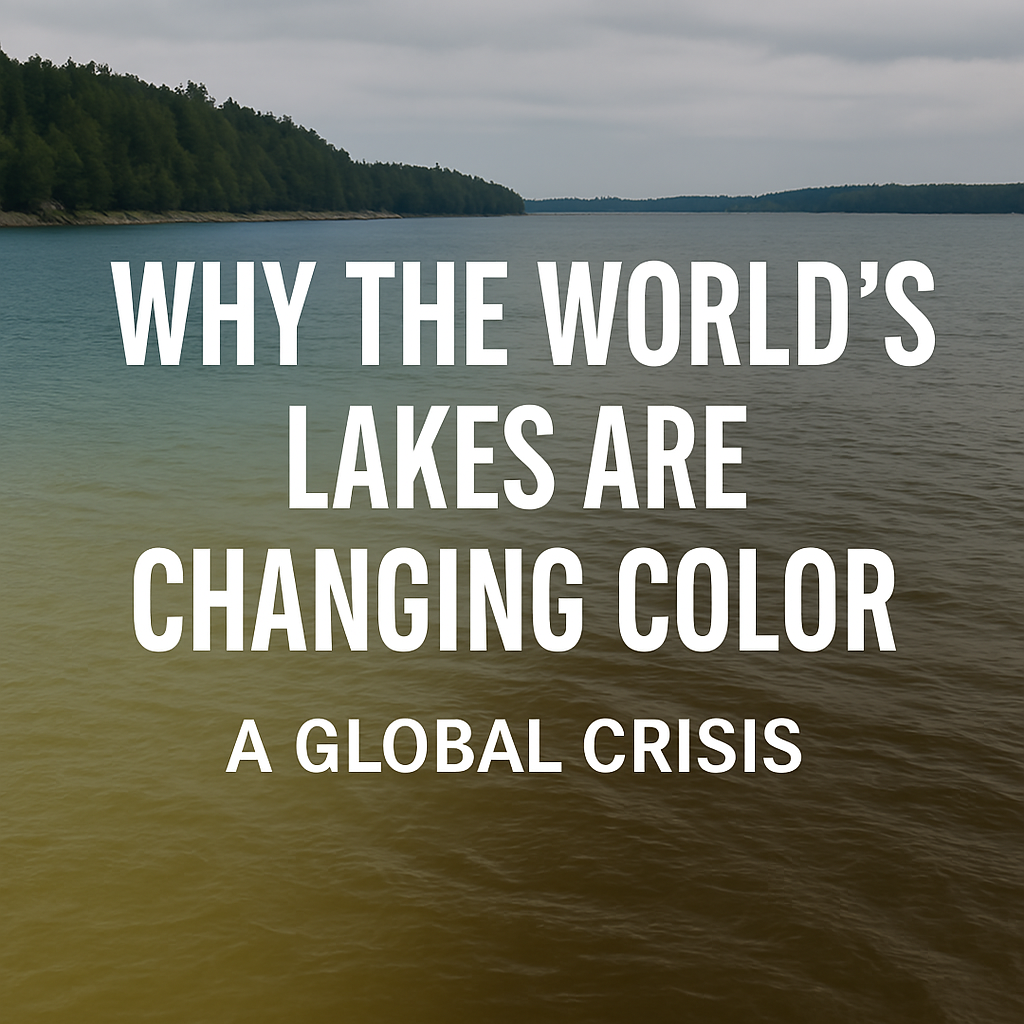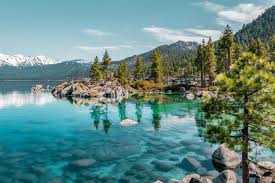
By Serge | World Today
Published: April 2025
Introduction: When the Water Changes Color
From deep Arctic blue to muddy brown and swampy green—our lakes are transforming before our eyes. Once viewed as stable reflections of the climate, lakes are now shifting colors at alarming rates. The implications go far beyond aesthetics—they point to a rapidly changing ecosystem, one that could disrupt life across continents.
The Science Behind Lake Colors
The color of a lake isn’t random. It’s determined by what’s suspended in the water: algae, sediment, organic matter, and even temperature. Blue lakes usually indicate clean, cold, and deep waters. Green lakes often signal algal blooms—usually caused by heat and nutrient pollution. Brown lakes are typically shallow, warm, and rich in sediment.

The Study That Shocked the World
In 2022, a team of scientists from the U.S. and Israel conducted a groundbreaking study analyzing 85,360 lakes worldwide using satellite data spanning 36 years. Their findings were staggering: more than 85% of the world’s lakes had experienced significant color changes. Only 10% of those surveyed were deemed “blue,” with most shifting toward green or brown shades.
The Culprits — Climate Change and Human Activity
Why are the lakes changing color? Rising global temperatures are a major factor. Warmer waters create ideal conditions for algae to flourish. At the same time, human activities such as deforestation, agriculture, and urbanization introduce fertilizers, pesticides, and waste into lakes. These pollutants fuel algal growth and increase turbidity, turning lakes green or brown over time.

The Regional Divide in Lake Color Change
Blue lakes are mostly found in colder regions: Canada, the European Alps, Tibet, and New Zealand. But these lakes are at high risk of turning green or brown as temperatures rise. The study found that even a 1.5°C increase in average temperature could shift the equilibrium of many pristine lakes. Areas like Scandinavia, Eastern Russia, and northern U.S. states could see dramatic transformations within decades.
Ecological Consequences of Color Shift
Changing lake colors are not just a visual shift—they signify serious ecological imbalance. Algal blooms reduce oxygen levels in water, killing fish and other aquatic organisms. Brown lakes, heavy with sediment, block sunlight and hinder plant growth. These changes can lead to dead zones, loss of biodiversity, and the collapse of entire ecosystems that depend on the lake’s health.

How Humans Are Affected by Lake Color Changes
The consequences extend to human populations too. Green, algae-rich lakes can emit toxins that cause illness in people and animals. Brown lakes may not be safe for drinking, fishing, or swimming. Communities that depend on lake-based tourism, fishing, or clean drinking water are already feeling the effects—economically and physically.
Satellites and Science — Monitoring Lake Health from Space
The study relied on NASA’s Landsat satellites, which have recorded Earth’s surface since the 1980s. These satellites captured seasonal and annual variations in lake colors, revealing long-term trends previously undetected. By measuring changes in reflectivity and chlorophyll concentration, researchers now have tools to monitor freshwater health on a global scale.

The Battle for Freshwater in a Changing Climate
Freshwater is becoming scarcer. As lakes deteriorate, the strain on clean water supplies increases. Climate change is melting glaciers, reducing river flow, and drying up wetlands. In parallel, pollution and mismanagement accelerate lake degradation. If current trends continue, millions may lose access to safe, freshwater sources.
What Can Be Done to Save the World’s Lakes?
- Reduce greenhouse gas emissions: Limit temperature increases by shifting to renewable energy and sustainable practices.
- Control nutrient runoff: Improve agricultural practices and wastewater treatment to limit pollution.
- Protect watersheds: Preserve forests, wetlands, and buffer zones around lakes to filter contaminants naturally.
- Monitor and regulate development: Urban planning must consider environmental impact on nearby water bodies.
- Public awareness: Educating communities about the signs of lake degradation and how they can act locally.
Conclusion: A Planet in Reflection
Lakes are no longer passive mirrors of the sky. They are warning signs—colored flags—of a world in distress. As climate change and human influence deepen, the shift from blue to green and brown should alarm us all. We are witnessing a transformation that touches biodiversity, health, economics, and the future of freshwater resources. The time to act is now.
here is another interesting article that relates
Join the Conversation
Do you live near a lake or water source that’s changed in recent years? Share your story with us and join our growing community of environmental watchdogs.
Subscribe to our newsletter to stay informed on climate news, science breakthroughs, and global challenges that matter most.

